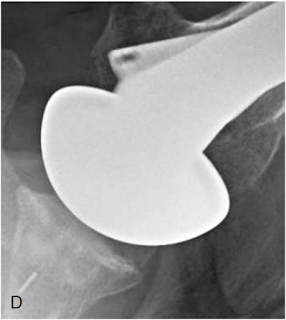Subscapularis failure can be a devastating complication of shoulder arthroplasty, leading to weakness and instability (see this link).
In a systematic review and meta analysis of 8 qualifying articles, these authors compared the clinical, radiographic, and functional outcomes between subscapularis tenotomy (ST), lesser tuberosity osteotomy (LTO), and subscapularis peel (P) for managing the subscapularis during shoulder arthroplasty.
No significant difference was found in postoperative external rotation (ER) or forward flexion (FF) between the groups.
Meta-analysis found the P cohort to have a significantly greater internal rotation (IR) strength when compared to the ST cohort.
Belly press was negative most commonly with the LTO group and there was a significant difference as compared to the tenotomy or peel groups (p<0.0001).
The preoperative to postoperative improvement for the peel group was somewhat higher than for the other methods.
All groups had good postoperative patient reported outcomes scores (average ASES score range 78.6-87), with the peel group scores being somewhat higher.
Comment: It is apparent that surgeons can successful use any of these methods for managing the subscapularis at the time of shoulder arthroplasty. Perhaps more important than the method is how well the takedown is done, how well it repaired, and how well the repair is protected during healing.
Our surgical approach to subscapularis management can be used with any prosthesis. It involves a careful peel of the subscapularis tendon from the lesser tuberosity with attention to preserving the integrity of the biceps tendon and a 360 degree release of the capsule from the glenoid to resolve limitation of external rotation. By retaining the capsule on the deep surface of the tendon, the strength of the repair is enhanced.
These sutures are then passed through the tendon edge, including the capsule retained on its deep surface, and tied securely.
Of these the most important stitch is the superior one (the "mother stitch") in that this suture takes the most load when the arm is externally rotated. See The biomechanics of subscapularis repair - all sutures are not equal!
A principal cause of post operative subscapularis failure is the overzealous and premature stretching of external rotation or premature initiation of internal rotation strengthening. We limit external rotation stretching to zero degrees (the hand shake position) and avoid internal rotation strengthening exercises for at least 3 months after surgery.
We also caution patients about the risk of events that may suddenly externally rotate the shoulder such as a fall or a sudden pull on the arm from a leashed dog.
Other related posts are listed below:
Subscapularis failure after arthroplasty - evaluation and management
Subscapularis in shoulder arthroplasty
==
To see a YouTube of our technique for total shoulder arthroplasty, click on this link.
To support our research to improve outcomes for patients with shoulder problems, click here.
To subscribe to this blog, enter your email in the box to your right that looks like the below
===
We have a new set of shoulder youtubes about the shoulder, check them out at this link.
Be sure to visit "Ream and Run - the state of the art" regarding this radically conservative approach to shoulder arthritis at this link and this link
Use the "Search" box to the right to find other topics of interest to you.
















